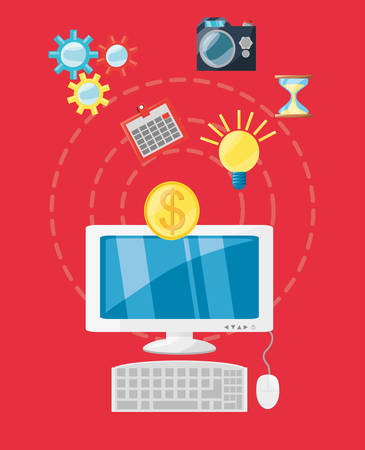Evolution of Personal Finance Apps in the U.S.
Over the past decade, personal finance apps in the United States have undergone significant transformation, adapting to shifting user expectations and a rapidly changing regulatory environment. Initially, these digital tools focused on basic functionalities such as budget tracking and simple expense categorization. However, as American consumers became more digitally savvy and their financial lives grew more complex, the demand for advanced features like automated savings, credit monitoring, and real-time investment tracking surged. This evolution has been further accelerated by the increasing adoption of smartphones, which positioned mobile-first solutions at the center of everyday money management.
The regulatory landscape has also played a critical role in shaping how personal finance apps operate. With the introduction of data privacy laws such as the California Consumer Privacy Act (CCPA) and evolving standards from federal agencies, app developers have had to prioritize robust security measures and transparent data handling practices. In response, leading fintech companies are now integrating bank-level encryption, biometric authentication, and clear consent protocols into their platforms to build trust with users.
Moreover, American users growing appetite for holistic digital financial management tools has driven app providers to go beyond traditional banking services. Modern personal finance apps now aggregate accounts across multiple institutions, offer personalized financial insights powered by artificial intelligence, and provide seamless connectivity with other digital services like tax filing or bill payment platforms. As we look ahead to 2025 and beyond, these trends suggest that personal finance apps will continue to adapt—becoming more sophisticated, secure, and tailored to meet the unique needs of U.S. consumers navigating an increasingly digital financial world.
AI and Machine Learning: Personalized Money Management
As we move into 2025, artificial intelligence (AI) and machine learning (ML) are revolutionizing the landscape of personal finance apps in the United States. These technologies are making it possible to deliver hyper-personalized financial insights that go far beyond traditional budgeting tools. Instead of static advice or generic alerts, AI-driven platforms now analyze spending habits, income streams, credit usage, and even regional economic trends to offer recommendations uniquely tailored to each user.
The most significant transformation comes in the realm of smarter budgeting. U.S. consumers are seeing apps that automatically categorize transactions, predict upcoming expenses based on historical behavior, and suggest actionable steps for saving more efficiently. For example, if a user consistently overspends on dining out compared to national averages, the app can proactively recommend meal planning or local grocery deals as alternatives.
| Feature | Traditional Apps | AI-Powered Apps (2025+) |
|---|---|---|
| Budgeting | Manual input & fixed categories | Dynamic, predictive categorization & real-time adjustments |
| Financial Insights | Basic monthly reports | Personalized tips based on real-time analysis & U.S. consumer trends |
| Investment Advice | Generic risk profiles | Tailored portfolio suggestions using ML models & market data |
| Savings Recommendations | Static goals set by users | Adaptive savings plans based on spending patterns & upcoming U.S. events (e.g., tax season) |
Investment recommendations have also become more sophisticated. Modern apps leverage AI to scan vast amounts of market data and match investment strategies with an individual’s unique risk tolerance, age, income level, and future goals. This means a young professional in New York might receive different ETF or retirement account suggestions than a retiree in Florida, all thanks to powerful algorithms that continuously learn from user behavior and market shifts.
The integration of AI and ML is also improving financial inclusivity across diverse demographics in the U.S., helping those who may not have access to traditional financial advisors. With these advancements, personal finance management is no longer one-size-fits-all—it’s a tailored journey powered by data, designed to help every American achieve their financial dreams with precision and confidence.

3. Open Banking and API Integrations
The U.S. is experiencing a fundamental transformation in personal finance apps, driven by the rapid adoption of open banking and robust API integrations. While Europe has led open banking regulation, American fintechs are now embracing data portability and interoperability as competitive advantages. Modern APIs enable seamless connections between banks, credit unions, investment platforms, and third-party financial tools, creating a unified ecosystem where users can access all their accounts from a single dashboard.
This shift toward open banking means that users no longer face barriers when switching providers or aggregating data. With secure API integrations, consumers can authorize apps to pull transaction history, balances, and even initiate payments—without ever leaving the app environment. This not only streamlines account management but also enables hyper-personalized insights, budgeting recommendations, and real-time alerts based on comprehensive financial data.
For U.S. consumers, the impact is twofold: first, they gain control over their financial information with greater transparency; second, they enjoy dramatically improved user experiences that mirror the convenience and customization found in other leading digital services. As open banking standards mature in the United States through both voluntary industry efforts and evolving regulatory guidance, personal finance apps will increasingly prioritize seamless connectivity. In 2025 and beyond, expect to see more platforms leveraging API-driven architectures to offer smarter tools, faster onboarding, and ultimately a more holistic approach to managing money.
4. Next-Level Security and Privacy Standards
As personal finance apps continue to evolve in 2025 and beyond, Americans’ concerns about data breaches and privacy violations remain front and center. The future of these platforms is being shaped by significant advancements in authentication, encryption, and privacy features—each designed to meet the rigorous expectations of U.S. consumers and regulators alike.
Authentication: Moving Beyond Passwords
The days of relying solely on passwords are fading fast. Modern finance apps are deploying multi-factor authentication (MFA), biometric verification (such as facial recognition or fingerprint scanning), and behavioral analytics that monitor unusual account activity. These tools not only provide a seamless user experience but also significantly reduce the risk of unauthorized access.
Comparison of Authentication Methods
| Method | Description | Level of Security | Common Usage in US Apps (2025) |
|---|---|---|---|
| Password Only | User-created secret word or phrase | Low | Rarely Used Alone |
| MFA (Multi-Factor Authentication) | Combines two or more independent credentials (e.g., SMS code + password) | High | Standard Practice |
| Biometric Authentication | Uses physical characteristics like fingerprint or face ID | Very High | Increasingly Popular |
| Behavioral Analytics | Monitors user behavior patterns for anomalies | High (with MFA) | Emerging Trend |
Encryption: Safeguarding Data at Every Step
End-to-end encryption is becoming non-negotiable for all transactions and stored information within financial apps. U.S.-based fintech companies are adopting advanced cryptographic protocols like AES-256, which ensures that even if data is intercepted, it remains indecipherable to unauthorized parties. Additionally, secure key management practices and regular third-party audits are now industry standards.
Privacy Features: Control and Transparency for Users
A growing number of Americans demand not just security, but also greater control over their financial data. In response, leading personal finance apps now offer customizable privacy dashboards that allow users to:
- Select what data is shared with third parties
- Easily manage permissions for connected accounts and devices
- Access transparent audit logs detailing who accessed their information and when
- Utilize automated alerts for any suspicious activity or policy changes regarding data usage
The Regulatory Landscape: Adapting to U.S. Laws and Expectations
In anticipation of stricter federal regulations such as the American Data Privacy and Protection Act (ADPPA), app developers are proactively building compliance frameworks into their platforms. This includes clear opt-in/opt-out mechanisms, timely breach notifications, and comprehensive user consent protocols—all contributing to a safer digital environment for U.S. consumers.
Together, these next-level security and privacy enhancements are not only addressing American users’ heightened concerns—they’re establishing new benchmarks that will define the personal finance app industry’s trustworthiness well into the future.
5. Embedded Financial Products and Ecosystem Expansion
The personal finance app landscape in the U.S. is rapidly evolving beyond basic budgeting tools, with a clear shift toward embedding a wide range of financial products directly within a single platform. This trend is redefining consumer expectations and fundamentally transforming how Americans interact with their finances.
Integrating Core Banking Services
Leading finance apps are now offering integrated checking and savings accounts, allowing users to manage deposits, track balances, and set up direct deposits—all without ever leaving the app. By partnering with chartered banks or leveraging Banking-as-a-Service (BaaS) solutions, these apps provide FDIC-insured accounts that rival traditional banking experiences. For U.S. consumers, this seamless integration means more convenience and real-time control over their cash flow.
Lending and Credit on Demand
The next generation of personal finance apps goes beyond tracking spending by embedding lending products such as personal loans, credit lines, and even buy now, pay later (BNPL) options. These offerings are tailored using real-time financial data within the app, streamlining approvals and providing personalized rates. As a result, consumers can access short-term liquidity or build credit directly from their preferred financial dashboard—a significant value-add in an increasingly digital-first economy.
Insurance & Investment Integration
Forward-thinking platforms are incorporating insurance products—ranging from renters to auto to life coverage—within their ecosystems. Similarly, investment services like robo-advisory accounts, fractional stock trading, and even crypto wallets are being embedded for holistic portfolio management. By aggregating these traditionally siloed services, finance apps empower users to manage risk and grow wealth in one unified experience.
A Shift Toward All-in-One Financial Ecosystems
This ecosystem expansion is about more than just convenience—it’s about creating sticky platforms that become central to users’ financial lives. The U.S. market is responding positively: consumers increasingly prefer apps that offer comprehensive solutions rather than juggling multiple providers. For fintech companies, this trend drives higher user engagement, greater cross-selling opportunities, and stronger retention metrics—key factors in long-term growth and valuation.
What’s Next?
As competition intensifies, expect further blurring of the lines between traditional banks and fintechs. The most successful apps will be those that can seamlessly integrate new financial products while maintaining security, compliance, and user trust. Ultimately, embedded financial ecosystems are poised to become the standard in personal finance management for Americans heading into 2025 and beyond.
6. Financial Wellness and Inclusivity
The next frontier for personal finance apps in the United States is not just about smarter automation or investment opportunities—its about building a more financially inclusive future. As we look ahead to 2025 and beyond, leading fintech platforms are doubling down on their missions to promote financial literacy, holistic wellness, and inclusivity, especially for Americans who have been historically underserved by traditional banking institutions.
Empowering Through Financial Literacy
Modern personal finance apps now feature interactive education modules, real-time spending analysis, and gamified savings challenges designed to demystify complex financial concepts. By leveraging behavioral data and AI-driven recommendations, these platforms tailor learning experiences that address unique user pain points—from understanding credit scores to planning for retirement. The goal is clear: to help users build confidence in managing their money regardless of their starting point.
Bridging Gaps in Underserved Communities
A significant trend reshaping the industry is the focus on accessibility. Many Americans, including immigrants, gig workers, and those with limited credit histories, have traditionally faced barriers to mainstream financial services. Personal finance apps are bridging these gaps by offering alternative credit assessments, supporting multiple languages, and partnering with community organizations. Some apps now provide fee-free accounts, early wage access, and micro-investing features specifically tailored for lower-income users—delivering practical tools that foster upward mobility.
Measuring Impact: Financial Wellness as a KPI
Forward-thinking fintech companies increasingly view user financial wellness as a core performance metric. They track improvements in savings rates, reductions in debt, and increased usage of budgeting features among at-risk populations. These insights not only guide product development but also empower stakeholders—including investors and regulators—to assess the broader societal impact of digital finance innovation.
The Bottom Line
Looking ahead, the most successful personal finance apps will be those that champion both technological sophistication and social responsibility. By prioritizing financial literacy, wellness, and inclusivity, these platforms are shaping a future where every American has the tools to achieve long-term financial stability—regardless of background or income level.

